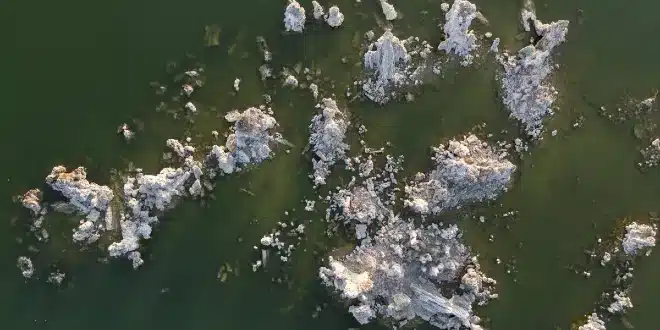In the Eastern Sierra Nevada’s Mono Lake, scientists have discovered a previously unknown microscopic organism that could provide new insights into how complex animal life originated on Earth. This organism, a type of choanoflagellate, is a single-celled microorganism closely related to animals.
The significance of this discovery lies in the fact that both the organism found in Mono Lake and the animals we see today share a common ancestor. Researchers are hopeful that studying this organism will shed light on the evolutionary process that led single-celled organisms to develop into multicellular life forms.
Nicole King, a co-author of the study and a professor of molecular and cell biology at UC Berkeley, expressed her fascination with the origin of animals. However, she pointed out that the fossil record offers little information about the first animals because they were small and soft-bodied. King explained that while choanoflagellates are recognized as “the closest living relatives of animals,” they have not been extensively studied until now.
In the study published in the journal *mBio*, King notes that choanoflagellates, or “choanos,” can form multicellular colonies, resembling the early stages of animal embryonic development. This ability makes them valuable in understanding ancient evolutionary processes.
Mono Lake itself is known for its harsh environment, with conditions that only the most resilient extremophiles can survive. The lake is hypersaline, with a salinity three times that of the ocean, and is also hyperalkaline. Additionally, it contains high levels of toxins, including cyanide.
Despite these extreme conditions, the discovery of the choanoflagellate suggests that the lake holds even more secrets. The organism, named *Barroeca monosierra*, interacts with bacteria in intriguing ways. For example, certain bacteria can trigger the transition of this single-celled organism into a multicellular state. King described this as a fascinating process, where bacteria act like an aphrodisiac, prompting the choanoflagellates to leave their solitary asexual existence and engage in sexual reproduction.
This discovery not only enhances our understanding of the origins of complex life but also opens up new avenues for studying how life forms adapt and thrive in extreme environments.


